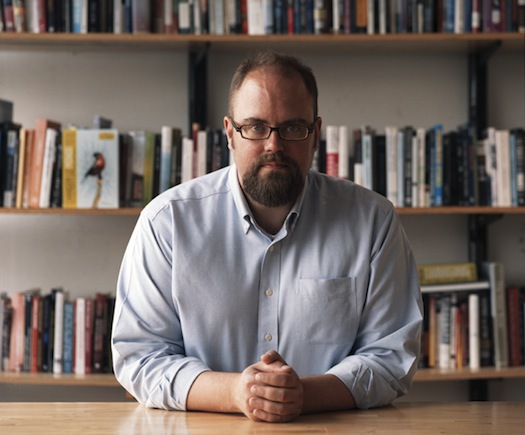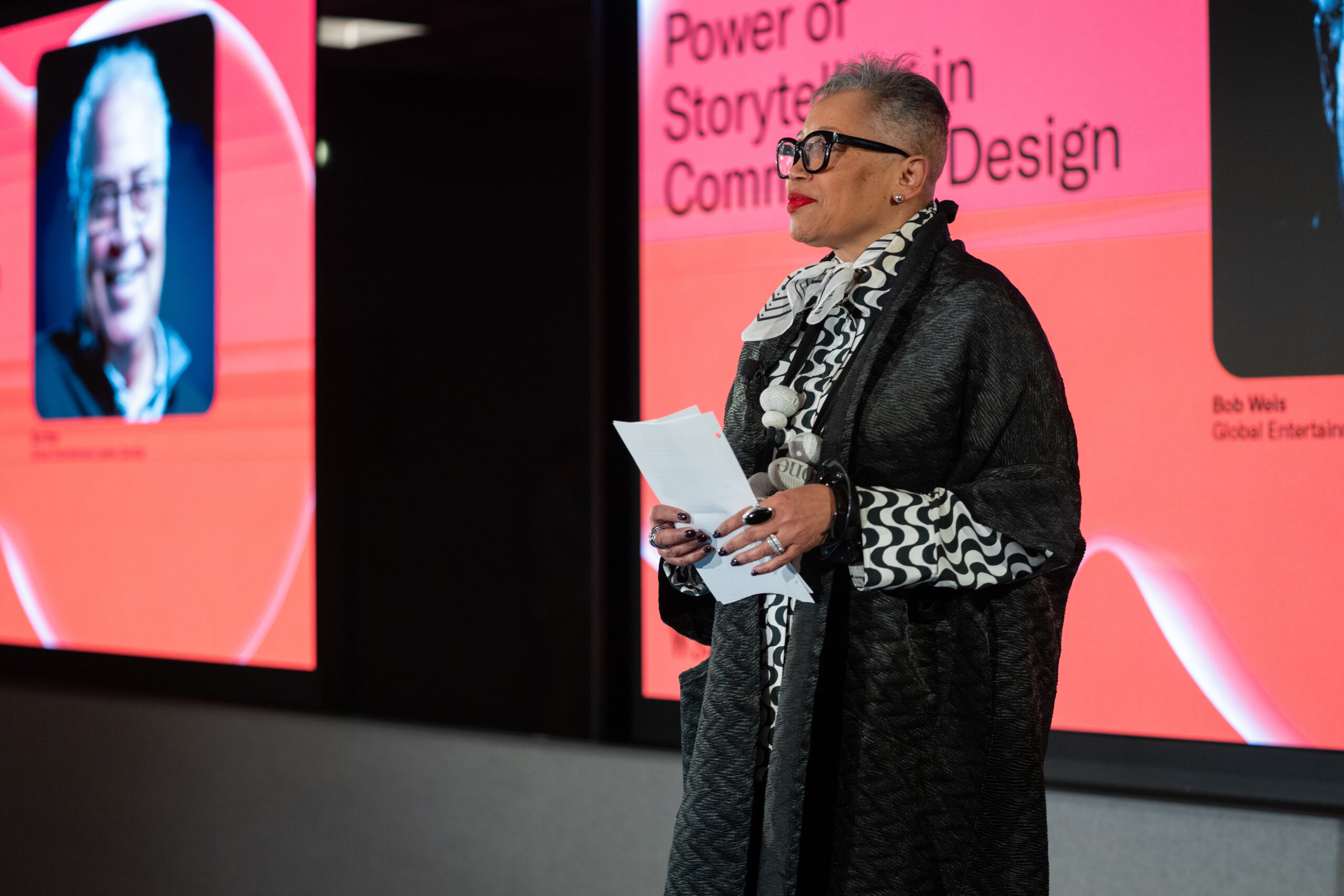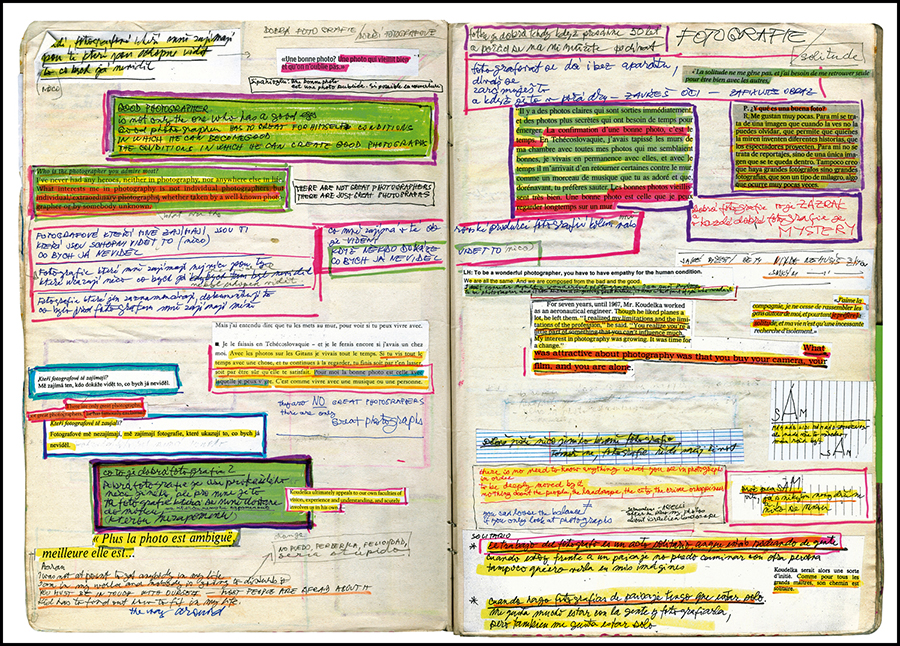
March 2, 2011
Alex Steffen: Worldchanging II

Alex Steffen. Via Seattle Met.
In 2003, Alex Steffen, a Seattle-based journalist, co-founded the website Worldchanging to provide news and informed solutions to environmental threats. Three years later, a book spun out of that effort. Worldchanging: A User’s Guide to the 21st Century was a 600-page synthesis of strategies for global challenges, with a foreword by Al Gore, design by Stefan Sagmeister and photos by Edward Burtynsky.
Widely recognized as a leading resource, the Worldchanging organization itself proved unsustainable because of a nonprofit business model that drained the energies of its formidable yet skeletal staff. After publishing a reported 12,000 articles, Steffen’s website closed late last year. Its legacy is continued through a revised and updated edition of Worldchanging, the book, which was published yesterday by Abrams.
Change Observer interviewed Steffen about this bittersweet accomplishment. The conversation took place by phone on February 17, 2011.
Change Observer: How has the world changed in the five years since you published the first edition of Worldchanging?
Alex Steffen: The biggest change is that sustainability and the awareness of the need for sustainability are mainstream in ways they’re weren’t five years ago. Then, outside of specialized conversations, it was hard to find many ideas about sustainable design or green buildings or sustainable urbanism. In the intervening years, we have not only seen a lot of really dire news that convinced many mainstream, credible people that these were important issues that deserved attention, but also social and cultural movements that have really taken off: the food movement, the trend towards walkable neighborhoods. Green building has rapidly moved from a hot topic to the way things are done.
In trying to think through a new edition of Worldchanging, we had an opportunity to stop and consider, “What do people really need to know now that the basics are largely familiar? What couldn’t we have told them five years ago?” In this edition, we left out almost all of the small-scale personal incremental actions you could take precisely because they’re readily accessible; thousands of websites will tell you how to do these things [e.g., buy ecologically responsible clothing]. We tried to include more of the innovative approaches to sustainability that are involved in making leaps.
CO: Such as?
AS: A key message we tried to bring forward was that the degree of scope, scale and speed of these problems demands that we look at systemic answers: how an entire system works for everybody, not just what we could do for ourselves. Of course, individual actions that help us connect are important. But we need to look more deeply at how things are designed and built. What our role is. What the parts of a system are that we don’t see. How to live into our capacity to be citizen designers of those systems.
CO: Who is your reader? Has that person changed over time?
AS: There are two completely different groups of readers. Some start at the beginning of the book, and read through it cover to cover and take it as an overview of how people address problems. It’s used in college classrooms that way. A lot of other people consult it as an occasional spur for inspiration. They’ll pick it up, glance through it, find something interesting. We tried to make this edition accessible in both ways, so if you start at the beginning you’ll get a thought-out presentation of one way of looking at the world’s problems and how they interconnect, but you can also read a chapter and explore something when you have a question. It’s a really good book to have at hand.

CO: In his introduction to this new edition, Bill McKibben not unexpectedly pinpointed carbon emissions as the single biggest problem facing our planet. Do you also believe there’s a first among evils?
AS: I think one of the difficulties of our present moment is that it’s difficult to pick a singular cause of any problem. Certainly fossil fuels are planetary disasters in the making but if you look at it, fossil fuel use is connected to all sorts of other things. In North America, it’s connected to land use; suburbs use a heck of a lot more energy and are responsible for more emissions than urban areas. And it’s connected to inequality and racism: there’s a bifurcation of issues ranging from energy to social spending to white flight that’s directly related to our history of being a very racist society. That whole tangle of our history is something we have yet to address. On the one hand, it’s great to keep a focus on the big challenges: planetary boundaries in general. On the other, it’s important to recognize that while those problems appear simple at first take, they are deeply nested in systems, and those systems are deeply politicized. Which is part of the reason it takes a 600-page book to really talk well about them.
CO: This is an ambitious revision of a book that was fairly ambitious to begin with. Was that always your plan?
AS: Originally, the scope of the revision was modest. It got away from us. We looked at various parts of the book and realized: Okay, here’s a section where something really big has changed and we have to remove this whole chapter and insert another. Before we knew it we had a substantially new book on our hands. The idea of updating it and making it fresh became instead, Let’s try and look at this in a whole new way.
CO: What needed updating the most?
AS: When we put the first book out, it was less clear how sharply delineated planetary limits are. Nobody was talking about the 350 movement [which seeks to limit carbon dioxide emissions to 350 parts per million]. Very few people were seriously engaging with ideas like geo-engineering or believed that we might be headed for a world where food supplies were in doubt.
A lot of what shifted for the book was context. In 2006, it wasn’t necessarily evident how much we had to change how quickly. It’s become much more obvious that we have to change quite a bit, and do it immediately. That itself was a big difference. We have some deadlines to meet.
Another change was that although the first book had an urban focus, we made more of an effort to be inclusive in our outlook and not push too much the urban nature of many of the solutions we covered. This time we’re being more up front. It’s clearer that cities are a big part of building a sustainable planet and that bright green cities are one of the biggest tools we have for tackling climate change. We focused more on what cities are doing, and the degree to which suburban North American is destined for unraveling.
And then there are parts that aren’t different in nature but involve subjects that are much more developed. Most urban Americans now have access in one way or another to car-sharing services. Whole businesses models are based on shared goods. We took the relatively small section on product service systems and addressed changes we were seeing across several chapters in the book. It’s not that we didn’t have those things before but now we were able to expand on them.
The same is true about green product design and green buildings. Efforts like Architecture 2030, passive house design, and the Living Building Challenge are pushing green building into the realm of carbon-neutral, closed-loop kinds of endeavors. It was nowhere near mainstream five years ago.
CO: You and your contributors have written about calamitous circumstances in a measured, even calming, way. How did you manage that?
AS: I think people who are wrestling with these big changes have to practice a certain amount of mental hygiene. When you’re dealing with issues that could result in the suffering and death of millions of people and the collapse of species, you have to watch your thought processes or they will creep up and do you harm. This is a topic we don’t discuss enough in change-related fields. I think a lot of people need more tools than they’ve been given for gathering emotional resilience. Things on the surface are overwhelmingly bleak.
In my case, I find that being solutions-focused and maintaining a cautious optimism helps me process really negative information in a much more healthy, productive way. Learning to look at the problems through lenses of how we might tackle them and change the dynamics involved in them, helps me to dampen their emotional impact.
I’m really lucky to be part of a number of conversations, both face-to-face and online, with people engaged in trying to solve these problems. I get direct feedback that there are lot of brilliant, thoughtful people dedicated to making things better. That helps a lot. But it is a difficult balancing act. A lot of thought has gone into the Worldchanging book about how to give people a take on the big trends that are driving change on our planet while still leaving them in possession of a roadmap of how we might tackle those changes.
CO: You sound more than cautiously optimistic.
AS: I think that the big open secret about sustainability work and innovation is not how bad things are. The real secret is how good things can get. There’s more and more evidence that many of the changes we need to make not only can be done but would vastly improve our lives. They would make us more money, provide us more jobs, make us healthier and happier. Our cities and energy would be cleaner and more affordable, our goods would be manufactured more sustainably. There’s still a bit of reticence to talk about how good things could get. It’s too bad. Buckminster Fuller had it right when he said people never leave a sinking ship until they see the lights of another ship approaching. Another ship is approaching, but we haven’t turned on the lights. If the book is doing a good thing it’s shining a light on what’s happening.
CO: This book is not only a beacon and a manual; it’s also a legacy. The website that engendered it is now gone and you’ve moved on to other things. In your view as a journalist as well as an environmentalist, how has the economic meltdown reshaped the world?
AS: I think there are a lot of people out there waiting for things to get back to normal. This mindset that the recession will end and things will go back to the way they were — I’m not sure they’re ever going to go back. In the last five years the recession and problems in the philanthropic world and interruptions in venture capital have meant that a whole bunch of models — whether in business, journalism or the design fields — have been broken. A whole bunch of people have found themselves in situations where they just can’t work in the “normal” way. A big chunk of what we think of as publishing is on its deathbed. A lot of journalism is in the same spot. Advertising has become topsy-turvy because people don’t know what represents a good expenditure of money anymore. Since so much content has been advertising-driven, traditional content doesn’t work anymore either. Even blogs in the circa-2004 version — generating traffic for pay-per-click ads — may no longer be a viable business model.
At the same time I think things have broken permanently around design-related fields. I’m not sure that the implications of open-source software, the cheap availability of prototyping machines and laser cutters, or a globally flat market have really sunk in. But I think the standard path for becoming a product designer — where you go to school, get a job and design things until you break through and get commissions to design really cool stuff — is under assault by the same forces that threaten journalism: no amount of expertise or brilliance will allow you to compete with a thousand people who can underbid you.
There’s a big shift in consumption and work patterns just beginning to play out. I’m seeing examples of recombinant professionalism — independent professionals are working together when they have the opportunity, sending each other jobs and generally acting as an ad-hoc but not legally related company. Or people are putting together really short-lived companies, designed for a single job. I’m seeing similar things in consumption patterns with post-ownership and collaborative consumption.
The extent to which those changes are moving through society is poorly understood. An example is cars. For Americans at least, getting your driver’s license and first car were preeminent marks of adulthood for a century. Now we have the lowest rate of 17-year-olds applying for driver’s licenses since World War II. We also have the highest volume of people living car-free since World War II. There’s been a huge shift in how people see their relationship to cars and to mobility. People are putting more of an emphasis on walkable neighborhoods. As I heard one person put it, this next generation is less interested in dream homes than dream neighborhoods.
The way people are using shared services and reimagining what they own — there’s a different mindset of affluence now, but because a lot of that mindset is not driven by ideology or do-gooding but by what works, the numbers are below the radar. Are fewer people buying cars because the economy’s harsh? Yes. Are fewer people buying cars because driving an auto is seen as incredibly unhip in some circles? Yes. Are fewer people driving cars because a spouse’s car or a friend’s car are available? Yes. It’s hard to pick apart the strands.
The challenge of doing this book is: How do we talk about those kinds of changes, making clear that they’re something to pay attention to but keeping a realistic perspective on the current landscape? What’s possible is moving really quickly, but what is reality is still largely unchanged.
Observed
View all
Observed
By Julie Lasky
Related Posts

Design Juice
L’Oreal Thompson Payton|Interviews
Cheryl Durst on design, diversity, and defining her own path

Arts + Culture
Jessica Helfand|Interviews
Josef Koudelka, Next: A Visual Biography: Ten Questions for Melissa Harris

The Editors|Interviews
GOOOOOOAL

Books
Jessica Helfand|Interviews
Henry Leutwyler: International Red Cross and Red Crescent Museum
Related Posts

Design Juice
L’Oreal Thompson Payton|Interviews
Cheryl Durst on design, diversity, and defining her own path

Arts + Culture
Jessica Helfand|Interviews
Josef Koudelka, Next: A Visual Biography: Ten Questions for Melissa Harris

The Editors|Interviews
GOOOOOOAL

Books
Jessica Helfand|Interviews

 Julie Lasky is editor of Change Observer. She was previously editor-in-chief of
Julie Lasky is editor of Change Observer. She was previously editor-in-chief of